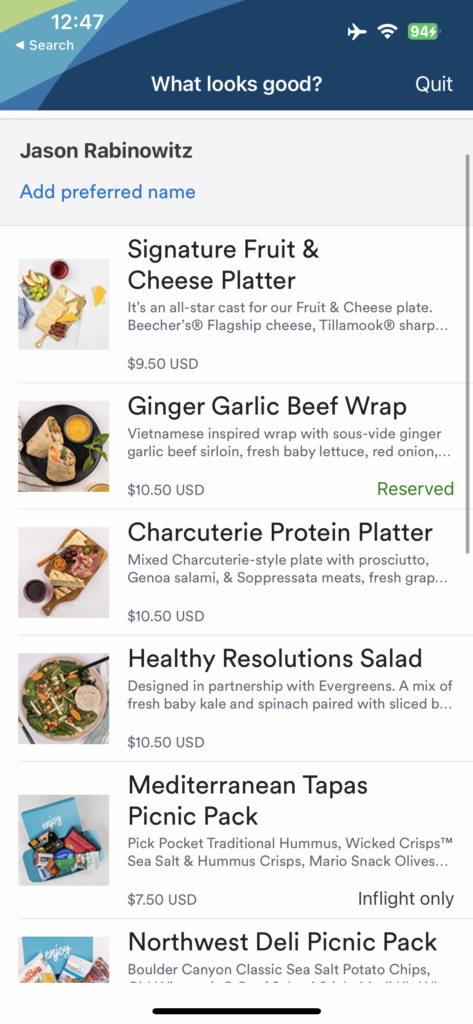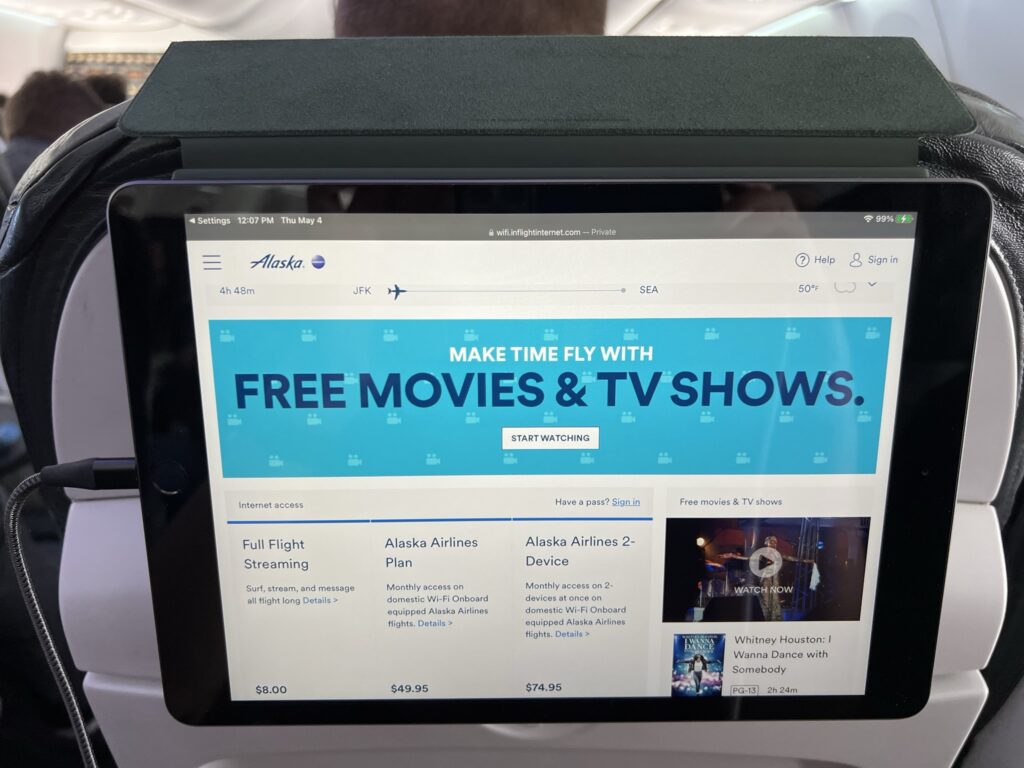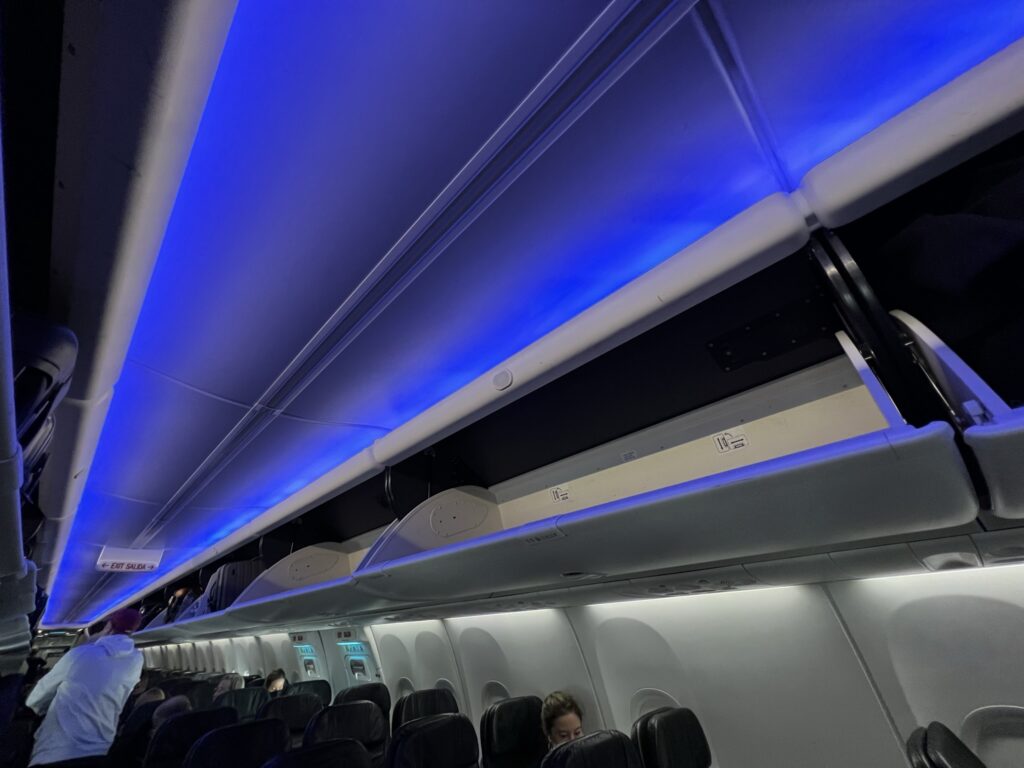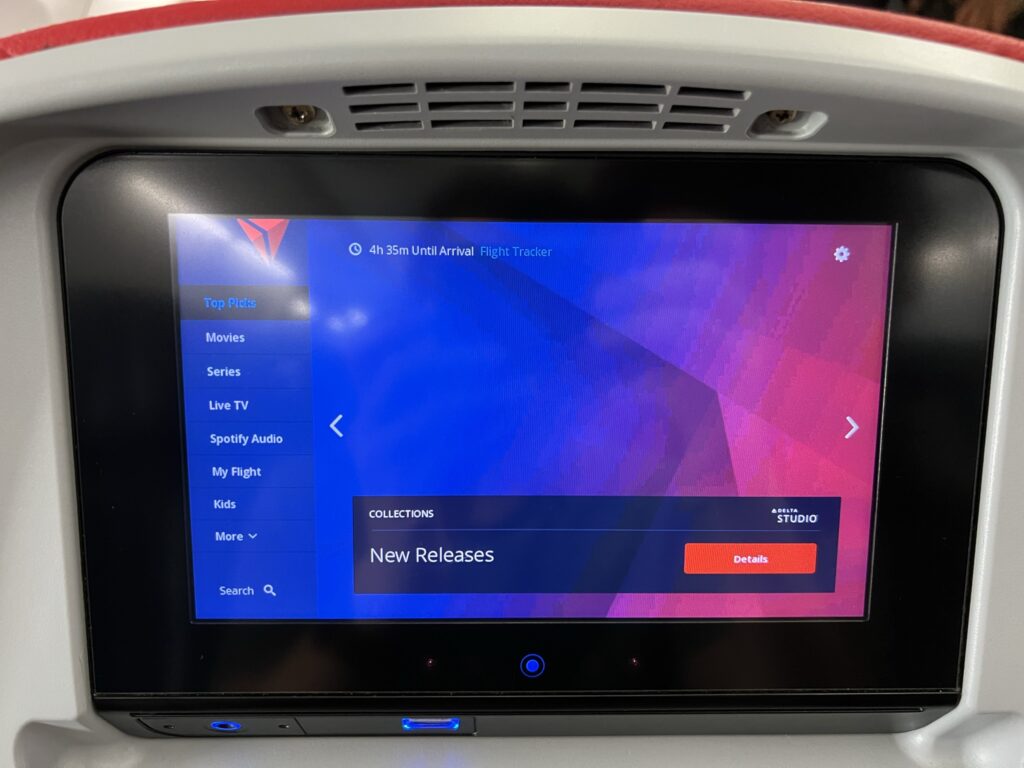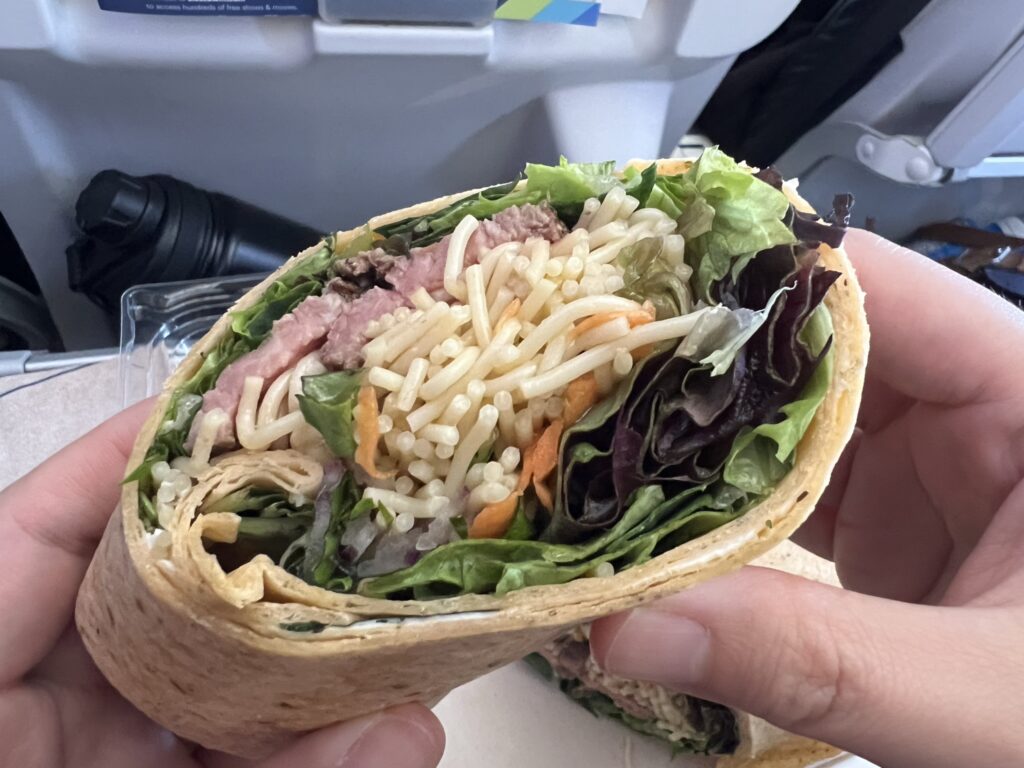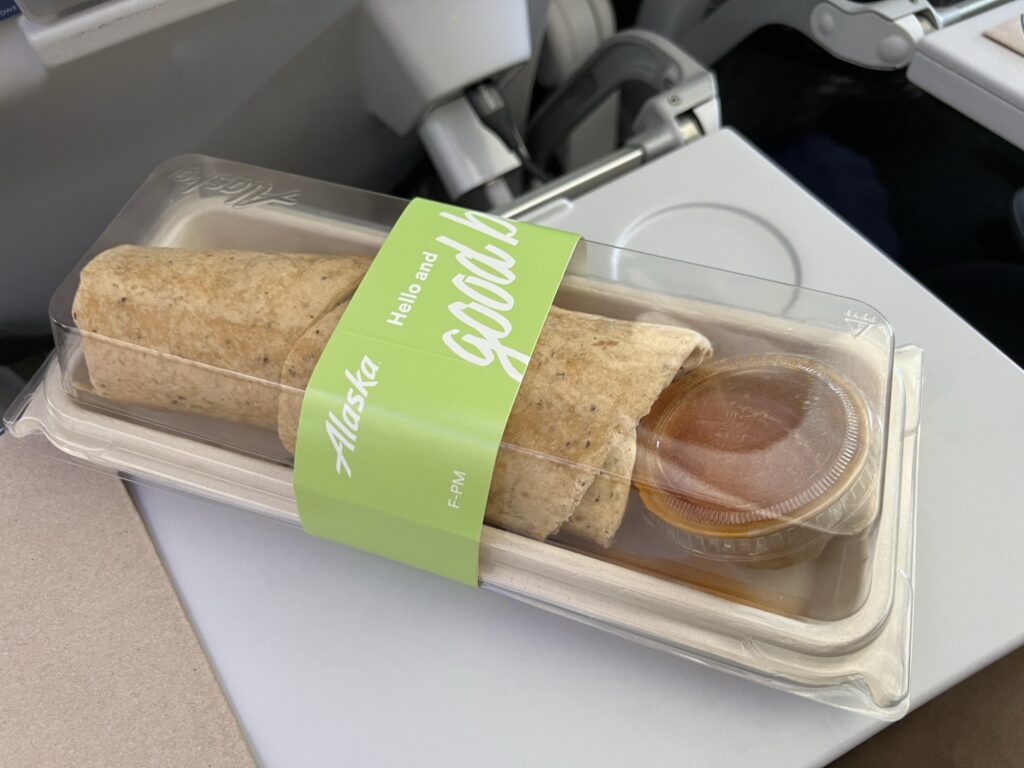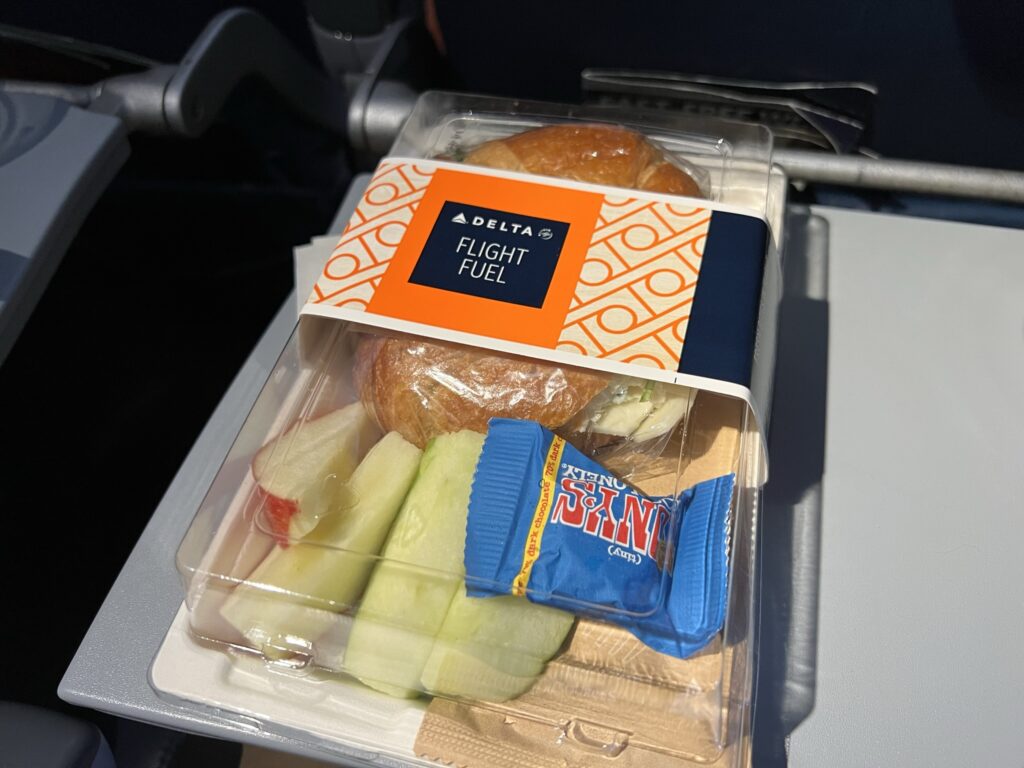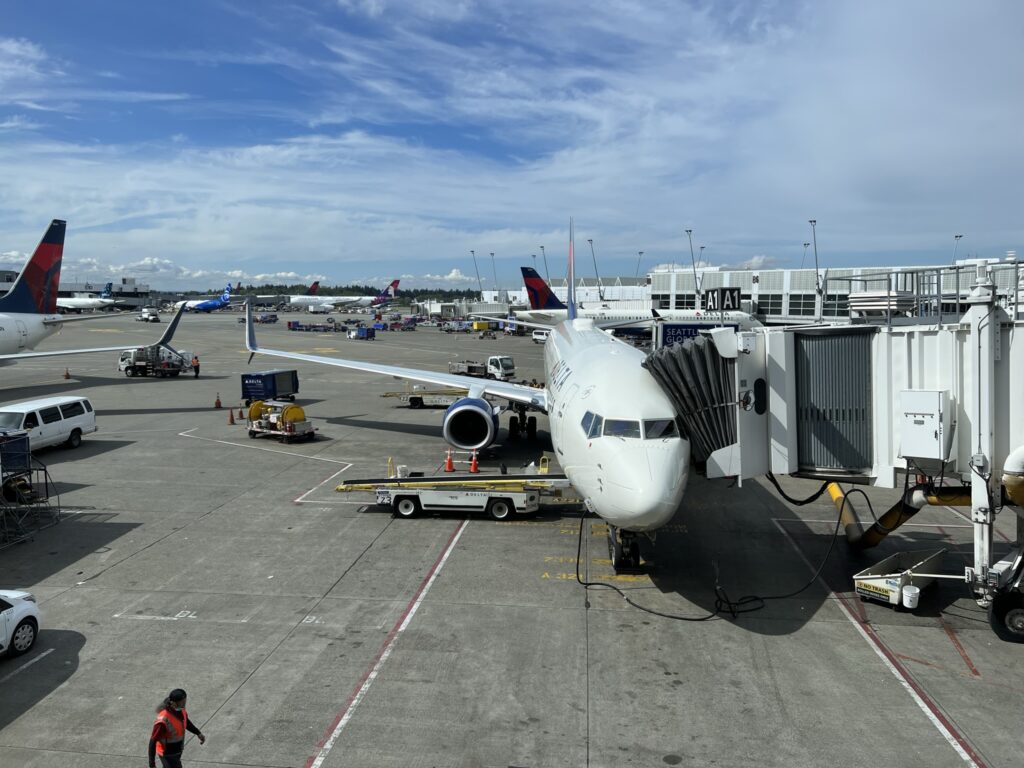 With US airlines offering generous ticket flexibility in a post-Covid world, I find myself splitting trips between multiple airlines more than ever before.
With US airlines offering generous ticket flexibility in a post-Covid world, I find myself splitting trips between multiple airlines more than ever before.
Needing to travel New York-Seattle roundtrip, I opted to split the flights between Alaska Airlines and Delta Air Lines, ending up on both carriers’ Boeing 737-900ER aircraft.
While I intentionally booked Delta’s 737-900ER due to the flight timing, the Alaska flight was scheduled to be operated by a new 737 MAX 9 up until the day of service. But Alaska ended up dispatching a 737-900ER for this particular flight for some reason.
Both airlines communicated various bits of information in the days leading up to the flights, but only Alaska provided any useful information. Alaska’s iOS app prompted me to pre-order food, an especially important notification since many of the items for sale are only available if pre-ordered.
Delta, on the other hand, provided only partial information about what would be available on board, with no opportunity to pre-order.
Both airlines’ apps provided helpful notifications when boarding began. Delta’s app is far more feature-rich, including offering terminal maps with indoor navigation.
But while Delta’s app recently received a minor refresh, I’ve found it to be quite unstable in recent months. It often refuses to launch or logs me out at random times with junk error messages.
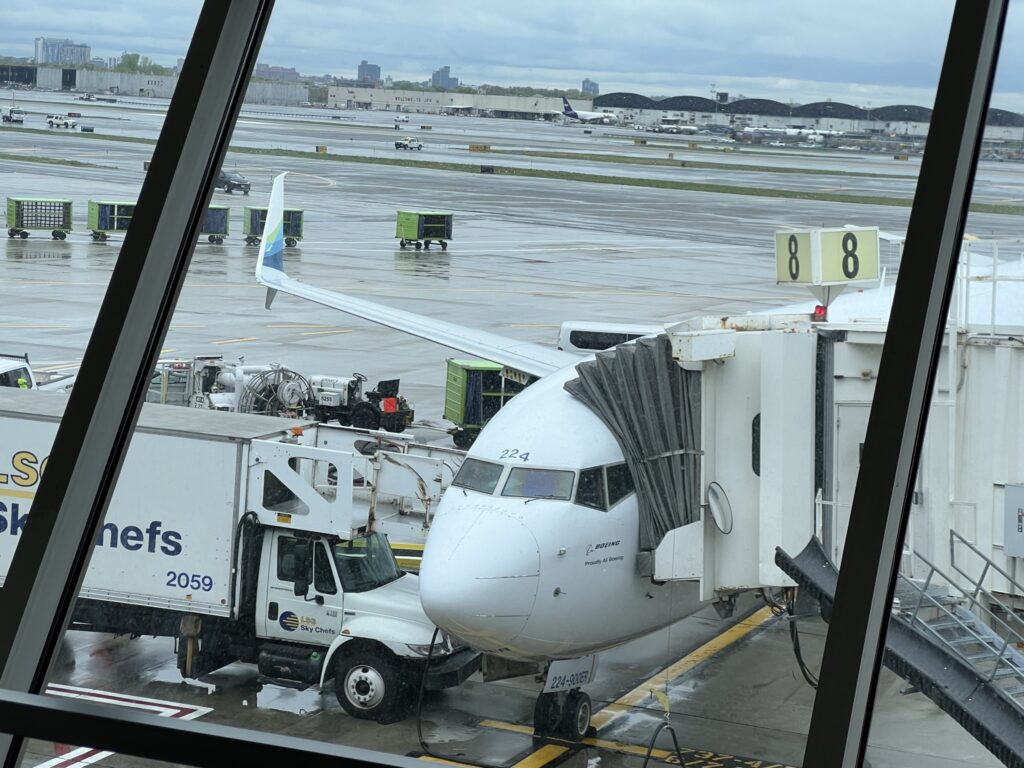 Boarding Alaska’s 737-900ER wasn’t exactly a trip back in time, but it was clear that I was missing out by not being on the MAX. While the MAX offers a personal device holder on each seatback, the 737-900ER is lacking this critical feature.
Boarding Alaska’s 737-900ER wasn’t exactly a trip back in time, but it was clear that I was missing out by not being on the MAX. While the MAX offers a personal device holder on each seatback, the 737-900ER is lacking this critical feature.
A six-hour flight on an airline that only offers streaming content but no device holder is not ideal. Thankfully, I was able to dangle my iPad from the forward seat by jamming its cover in between the headrest and seat itself, but having to resort to ‘makeshift seatback IFE’ is irritating.
At least Alaska’s content library is excellent. Hundreds of movies were available, though the carrier sometimes frustratingly omits the first installment in a series of movies.
The downgrade from the MAX to the 737-900ER also meant that the middle seat passenger had to contend with a large equipment box, something not present on the MAX.
At least the aircraft had the larger Boeing Sky Interior Space Bins, something Delta’s 737-900ERs lack.
Delta, on the other hand, is a staunch supporter of seatback entertainment screens. Its 737-900ER fleet is outfitted nose-to-tail with Panasonic screens and over 300 movies by my count.
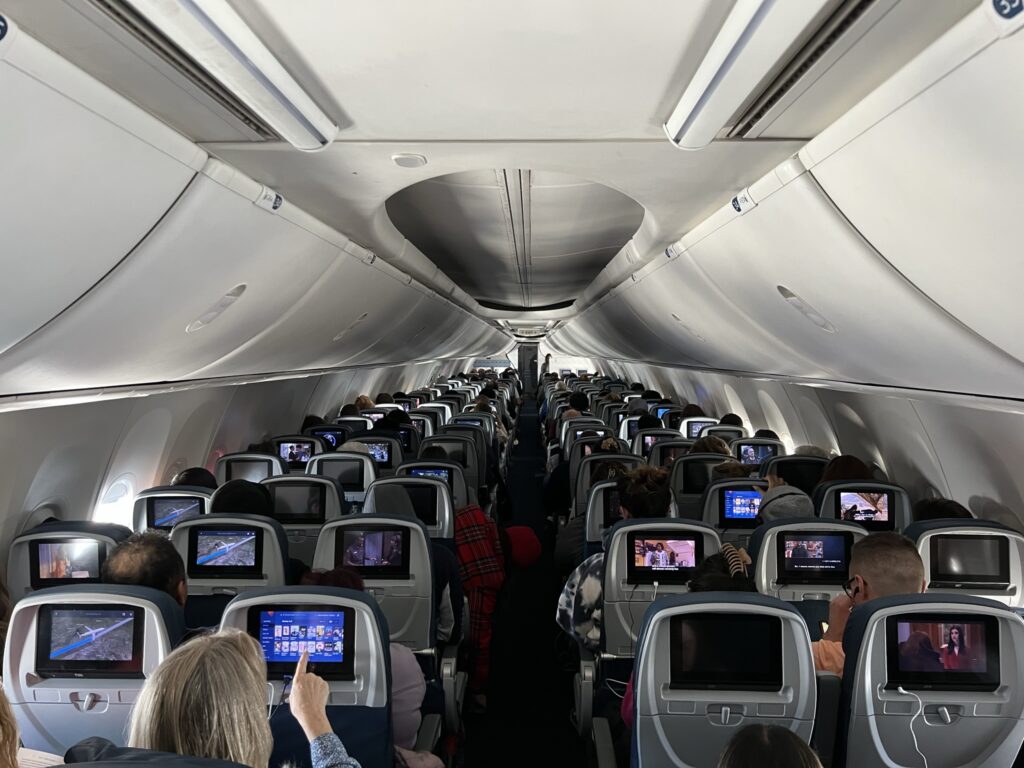 While both airlines offered a ton of content, Delta seemed to have a better selection. That opinion is entirely subjective, of course, but pairing Willy Wonka & the Chocolate Factory with Martin Scorsese’s Casino made for excellent viewing. Delta also offers a selection of live TV channels in addition to movies and cached television shows.
While both airlines offered a ton of content, Delta seemed to have a better selection. That opinion is entirely subjective, of course, but pairing Willy Wonka & the Chocolate Factory with Martin Scorsese’s Casino made for excellent viewing. Delta also offers a selection of live TV channels in addition to movies and cached television shows.
Airlines are still struggling to bring inflight catering back up to pre-Covid standards, but Alaska does well in this regard. The ability to pre-order food is a great touch, reassuring me that I wouldn’t go hungry or need to buy a $15 airport stale bread sandwich before departure. Alaska also stashes a well designed menu in the seatback pocket, listing all available items and prices.
I pre-ordered a tasty and filling ginger garlic beer wrap, which at $10.50 is a decent value.
I also appreciated Alaska’s concerted efforts to reduce single-use plastic waste, with flight attendants distributing water from large box cartons into smaller individual paper cups.
And then there’s Delta. Figuring out just what it offers on board is rather difficult. Honestly, it almost seems intentionally bad. The pre-departure email only mentioned free snacks, nothing about the Flight Fuel boxes or fresh sandwich offering.
There is no printed menu available either, and the flight attendant announcement was incomplete. Crew referred passengers to a QR code buried in the entertainment screen menus which was actually just a URL that leads to Delta.com, which further requires multiple page navigations to eventually find what might be offered on the flight, and only works with connectivity.
I was only in the fourth row of economy. But due to past experiences, I had my doubts that the chicken salad sandwich plate would be available. I was pleasantly surprised.
At a price of $12, I expected a higher quality offering, especially since Delta provided a much higher quality free meal to all passengers on this route up until the pandemic.
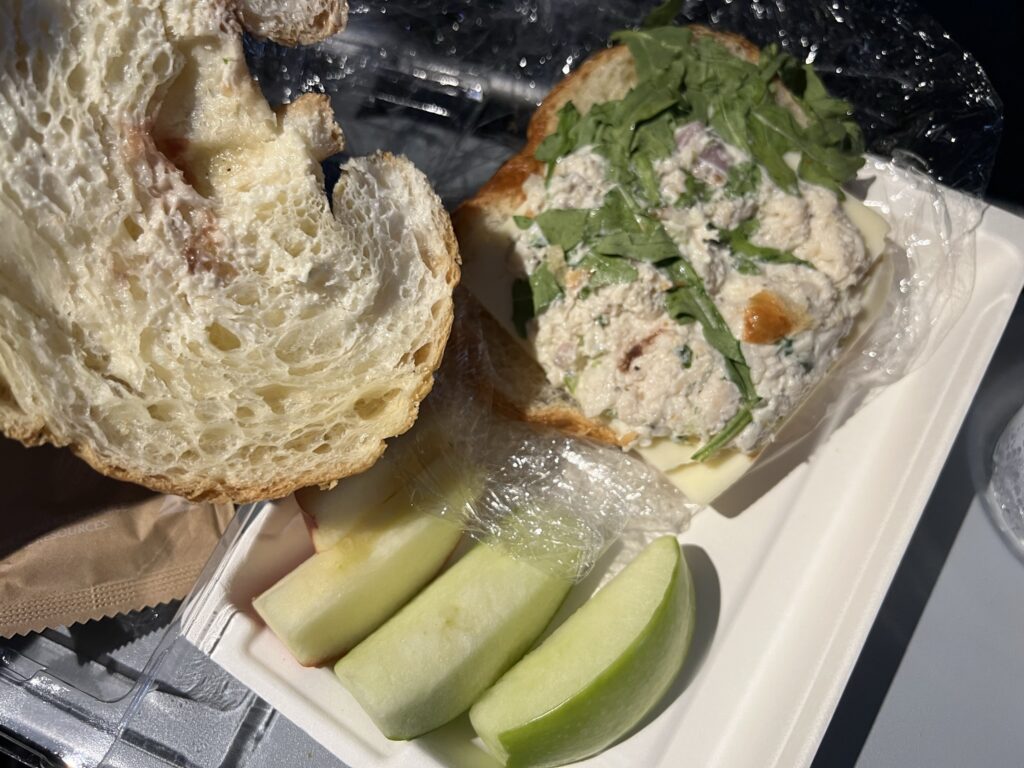 While both airlines offer satellite-based Wi-Fi, Delta has recently ripped and replaced the very system that Alaska is still installing.
While both airlines offer satellite-based Wi-Fi, Delta has recently ripped and replaced the very system that Alaska is still installing.
Alaska is nearly finished equipping its mainline fleet with Intelsat’s 2Ku solution, while Delta is well along in its quest to replace 2Ku with Viasat’s Ka-band offering.
Delta now offers free connectivity for SkyMiles members (or $10 without the free membership). Alaska, on the other hand, offers free messaging or an $8 flat rate for streaming quality access.
Both IFC systems performed well with no appreciable difference observed coast-to-coast.
Overall the experiences on both airlines were quite similar yet just different enough to make things interesting.
While both aircraft were roughly the same age, Alaska’s lack of seatback IFE, and seats that seemed to be an older vintage than the aircraft itself, made Delta’s aircraft and interior choices stand out as superior.
- Joy and frustration: A Delta A220 trip report
- Three-aircraft adventure on Alaska highlights product consistency work
- Delta’s refurbishment effort shines through on 31-year old 757
- Alaska Airlines’ service and soft product pull through again
All images credited to the author, Jason Rabinowitz



